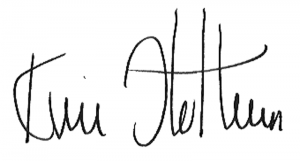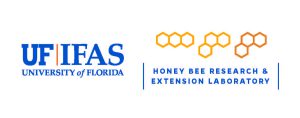By Kim Flottum
Soybeans, And Honey.
Jay Evans talks about honey bees and soybeans in his article this month, and when he did some historical research, he came across work I was involved in a long time ago with those two subjects – soybeans and honey bees.
I’d worked my way through undergraduate school in Horticulture, Production and Technology (I wanted to run a greenhouse business back then) and was pretty good at it because I got to practice all Summer long working for UW’s Extension Entomologist for small fruit, large fruit, turf, ornamentals and greenhouse pest control. Chuck Kovel was the go to guy for any grower of any of those crops when they had a bug problem they couldn’t figure out. So I worked in apple orchards, cranberry bogs, golf courses, nurseries, raspberry and blackberry farms, blueberry plantings and greenhouses. Back then I could kill any bad bug in any of those places eight different ways. But to learn how to kill them, we had to grow them, and we did that on one of the Experimental farms the University had, where there were chickens, pigs, corn, beef and milk cows, greenhouses and bees. So I got to work outside all Summer growing and killing things, and inside a greenhouse all winter, growing and killing things. What a job!
The USDA had a Bee Lab in Madison back then to study northern beekeeping among other things. Wintering was one of the tasks there, along with managing for honey production, but so was pollination of crops growing in the north. Eric Erickson was the research leader then, and because we worked on the same farm as his crew did, I was familiar with both him, his scientists and his support staff – the actual beekeepers there.
When I graduated my job with the Extension Office was over and it was time to actually use those skills I’d learned earning a living. At exactly that same moment, Eric got a four year USDA grant to study soybean pollination and production. He got a post-doc to do the science, but he needed someone who could manage all the varieties and types of soybeans he would need for the study. He needed a horticulturist, and I needed a job. A marriage made in Madison. Neither of us had to look one bit to solve both of our problems.
Eric’s grant was looking at what made soybeans attractive to honey bees. There was the obvious traits noted by Jay in that some soybean flowers, a legume with a pea-like flower, never opened and were totally self-fertile. But some varieties had flowers that opened wide open. Of those, some would be visited by bees, while some never saw bee one. He wanted to know why some, while open, were not attractive to bees. So we had to grow smallish plots of every kind of soybean he could find, and then measure honey bee visitation. Why some, and not others was the question, but first – which were the most attractive.
So before dawn, until much later in the day, all during bloom, I was in those plots counting honey bees, trying to determine those that were attractive compared to those that weren’t. This took most of the first summer outside, and winter inside in the greenhouse. But after that, we had a pretty good idea, and it was time for the next step: What made them attractive, and, was there something soybean farmers could do to increase attractiveness. Others in the lab, and other scientists had shown that soybeans visited by honey bees had an increase in yield. Some significantly.
So, next we moved into a special building called the Biotron on the Madison campus, where we could control every environmental condition needed to grow plants except gravity, and I hear they finally got that figured out. We determined air temperature, every aspect of the nutrients the plant needed, the quantity and quality of the light they received, the photo period, humidity, soil temperature, water quality and watering frequency. So we controlled each of those conditions for a group of plants, then, when they bloomed, offered some of each to a small hive of bees to see which they preferred.
From this we picked the most attractive and measured which of those conditions we controlled seemed to have the greatest affect (high, medium or low nitrogen amounts in the soil for instance), and reproduced as close as possible those conditions outside. The results weren’t a surprise. Pick a prolific variety, grow them in conditions that promoted even more productivity including bees, and yields go up. A no brainer. But soybean farmers didn’t seem to pick up on the results, and the study, though published, kind of went the way of lots of good information.
But we did find out something interesting. When you look at a large soybean field you see a sea of green. Uniform, continuous, and a non-event from the perspective of a honey bee flying over. What we found out was, if a field had a landmark, a telephone post for instance, you would see more bees closer to the post than farther from the post. There’s no doubt bees visit soybeans with or without a landmark. Mostly working the field edges, and beekeepers harvest barrels of soy honey every summer. But, and this was the fun part, we put a chair about 50 yards from the edge of a 50 or so acre field and measured yield of all the plants within 20 yards of the chair at the end of the season. Sure enough, the further from the chair, the less the yield.
Two lessons here, for soybean farmers. Pick the best variety for attracting honey bees and your yield will increase, and put a landmark every now and then across the field. Something simple, like a stake bees can see, but won’t get in the way at harvest, and your yields will go up even more. What could be easier?
•
Just in case you haven’t noticed, we’ve ramped up our digital presence quite a bit recently. We’ve had the KIM&JIM show (a monthly webinar with myself and Jim Tew interviewing a guest) for quite a bit already, but it continues to draw thousands of visits each month with people watching the webinars live, and then revisiting those that have been archived. You can find those on our web page. Also there is every CATCH THE BUZZ we’ve done – over a thousand bits of news that informs and educates beekeepers. Sign up for it, it’s free, and you get a piece of beekeeping news or information in your inbox every day, well almost every day when the digital gods don’t wake up on the wrong side of the bed. Except Sundays of course. We all need a day off. And then there’s the web page itself, with hundreds of past Bee Culture articles available, at the click of a mouse. You don’t have to find that issue from a year ago February somewhere in the honey house or in a pile somewhere, just pull up that issue, sit back and remember what it was you wanted to find.
And now our podcast is available. We just started it in June and over 6000 downloads have been made already. Once a week or so we, that is Jeff Ott and I, get ahold of somebody in the beekeeping world and have a chat. Informal, easy and always both entertaining and informative. You can find that at www.beekeepingtodaypodcast.com. And that too, is free. You can bring it up on your phone and listen while heading to the beeyard, or the next meeting. Take a look, we’ve talked to some pretty interesting folks so far, and have a lot more lined up.
•
There’s a new type of crop insurance out, and we’ve actually done two articles on it and how it works. It doesn’t have to do with past production or any other records, it has to do with the amount of rain that fell on your colonies this past Summer during a certain couple of months that you choose. That’s it. Rain. Not enough, you’re covered. Simple. And you can choose the level of coverage you want, or can afford. Some, or lots.
But, what if it rains too much? What if it rains and rains and rains. What if it drowns your honey crop. Washes it away. Floods and storms and all the nectar washed away. That’s what happened to our goldenrod crop this year. Rain and rain and rain and rain. The earlier part of the season, however, seemed to do OK, and there was honey in those boxes. But think about it – too little rain can ruin a crop, but so can too much, or even the right amount at the wrong time.
Just like too little rain for a certain two month period and you get paid, what about too much for a certain two month period? What if it rained nearly every day for the goldenrod flow, or the white sweet clover flow, or the tupelo flow? Too much rain, or rain too often and you’d get paid. Such a deal! Somebody look into that, OK? Honey crop insurance should be honey crop insurance.
•
One of the people we are trying to get on our podcast is Eric Wenger, the Chairman of True Source Honey. For background, I’ve copied the following off their web page – www.truesourcehoney.com.
True Source Honey, LLC is an effort by a number of honey companies and honey industry participants to call attention to the problem of illegally sourced honey; to encourage action to protect consumers and customers from these practices; and to highlight and support legal, transparent and ethical sourcing. The initiative seeks to help maintain the reputation of honey as a high-quality, highly valued food and further sustain the U.S. honey sector.
Eric and I were on a national public radio show last March called 1A, a talk show looking at current trends, politics and such, and with us was Gene Brandi, past President of the American Beekeeping Federation, and Margarita Lopez-Uribe, Assistant Professor of entomology at Penn State. The host was interested in both the quality, quantity and the price of honey and the status of honey bee health. The show is live, but is archived at https://the1a.org/shows/2018-03-27/pollinator-judgement-day. Gene talked about the stresses bees are under and what’s being done, Eric talked about honey coming in that was cheap, but mislabeled as to source, and I talked about local honey, increases in beekeepers in the U.S., and chimed in with the others when I could.
I was impressed with the story Mr. Wenger told about how far his company will go to insure that a bottle of honey that says Argentina actually comes from Argentina. They will send people to the shipper and follow the trail all the way to the beekeeper they bought it from. If there aren’t enough bees, that honey probably didn’t come from that beekeeper, and the sender is in trouble.
I mention this because now Interpol, the global police force, https://www.interpol.int/About-INTERPOL/Overview, is interested in the same thing. Funny honey coming from one place, but labeled as coming from somewhere completely different. Honey coming in from off shore at less than a buck a pound in the barrel has taken just about 80% or the market for honey in the this country. 80%!
I don’t know if True Source or even Interpol can help stop this fraudulent practice, but at least someone is trying. Read the letter to the Editor from the President of Apimondia, and then take in the 1A show if you can. At the same time they are depressing, and enlightening. There may be light at the end of the tunnel, yet.










